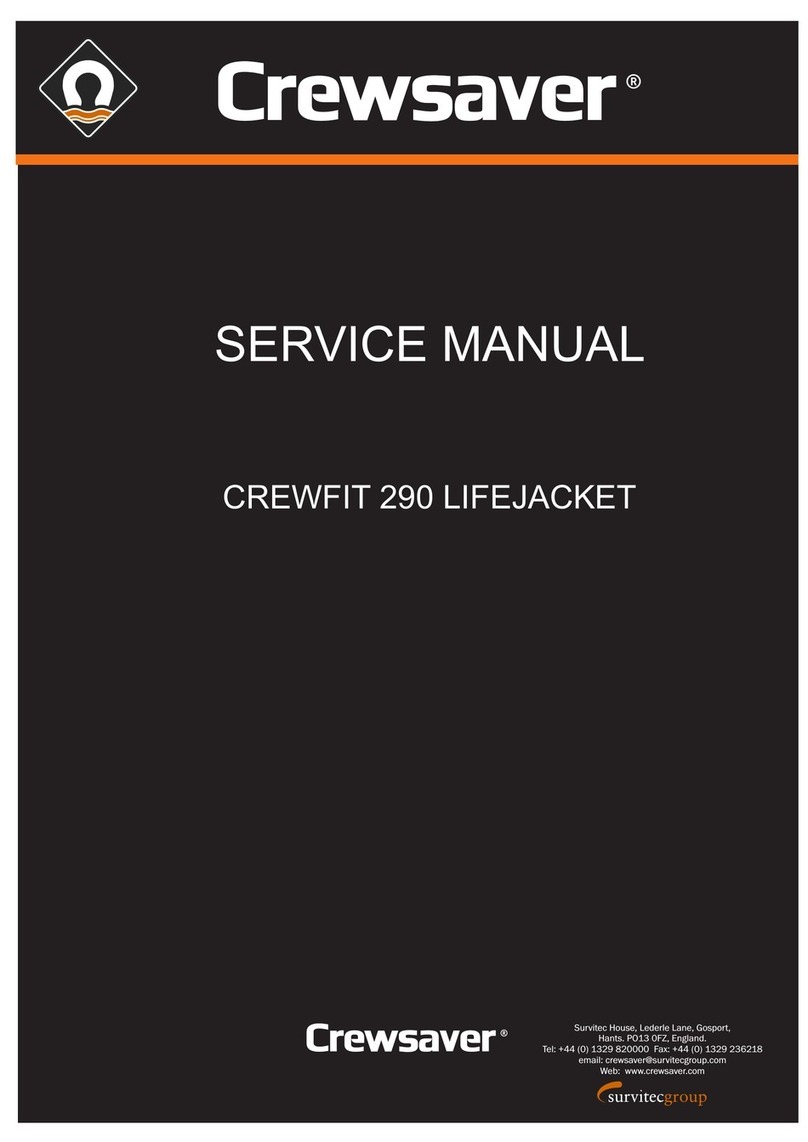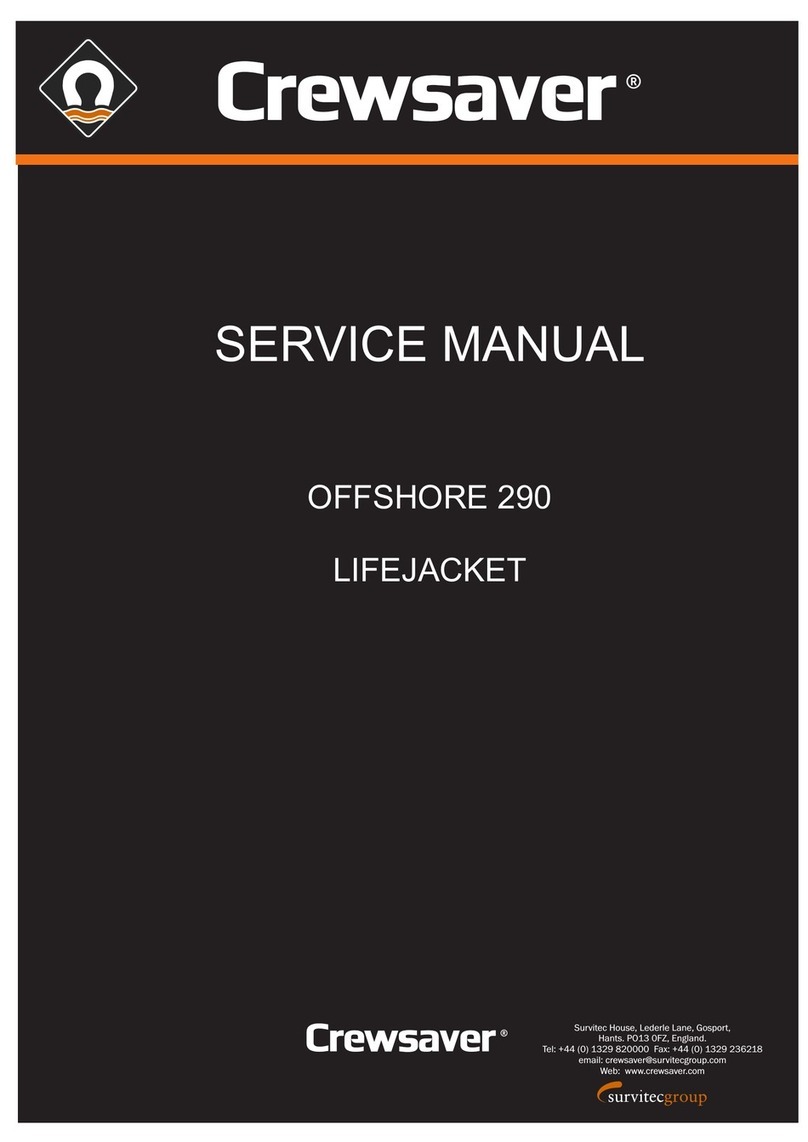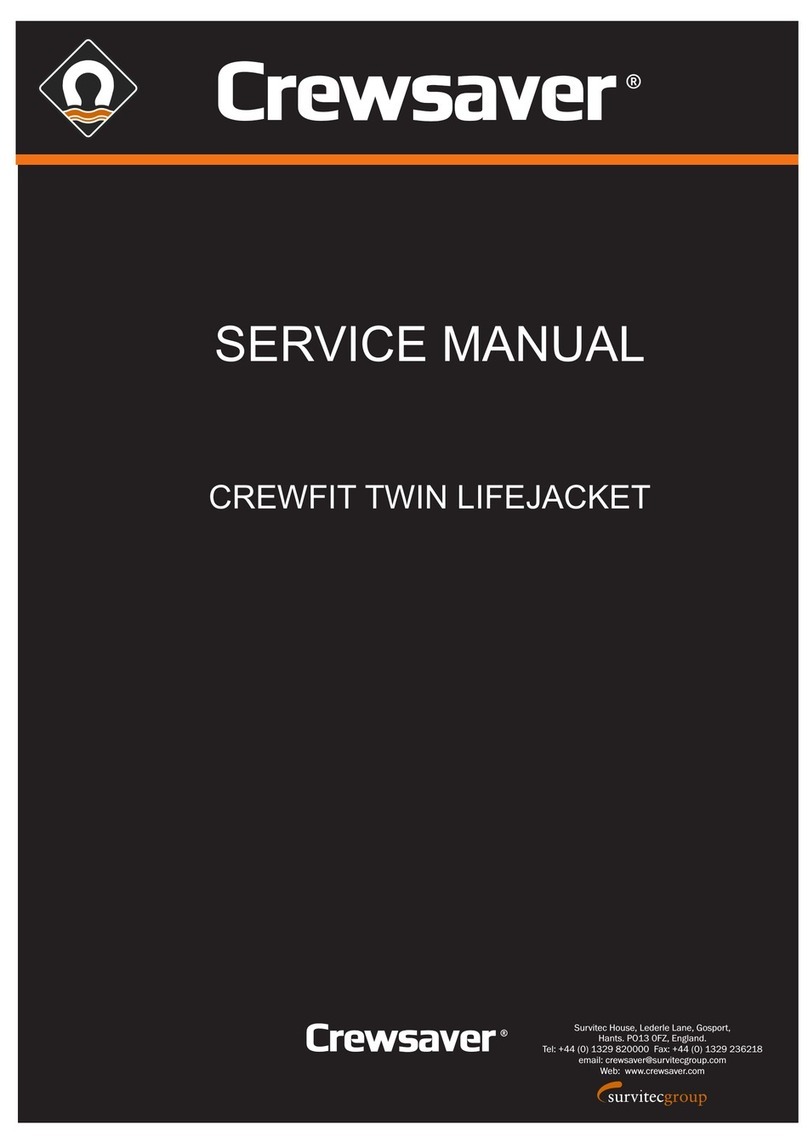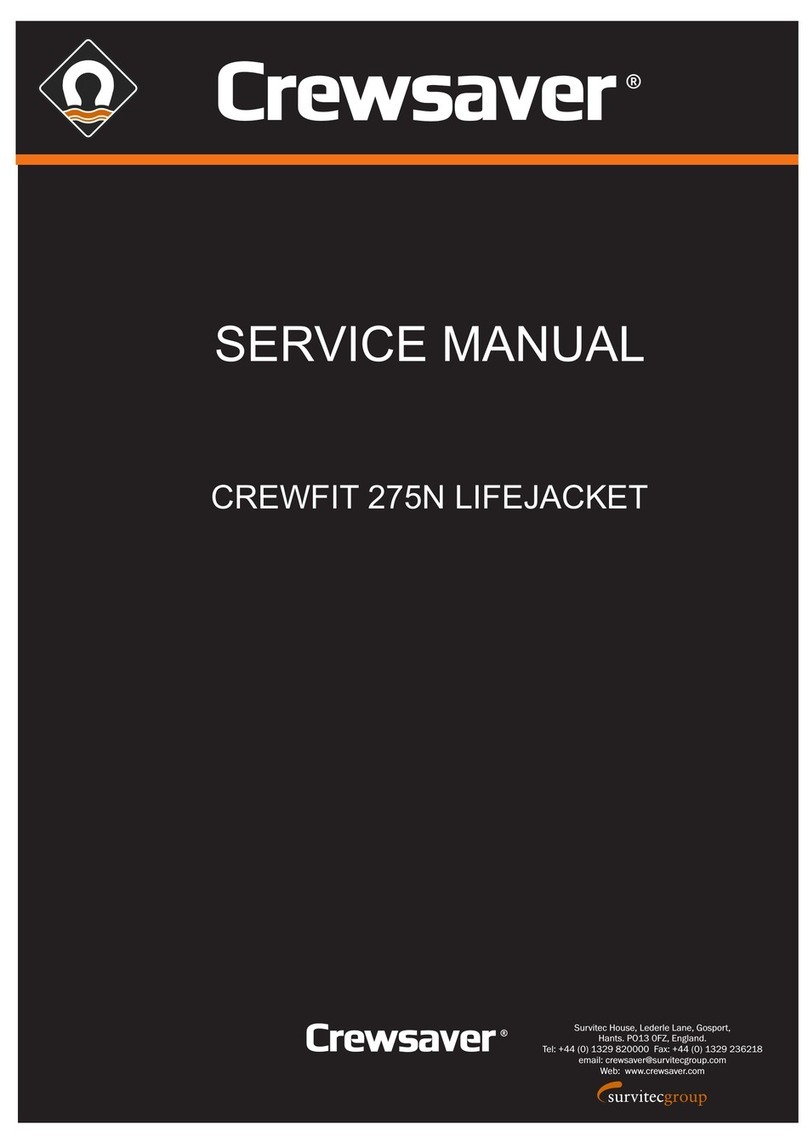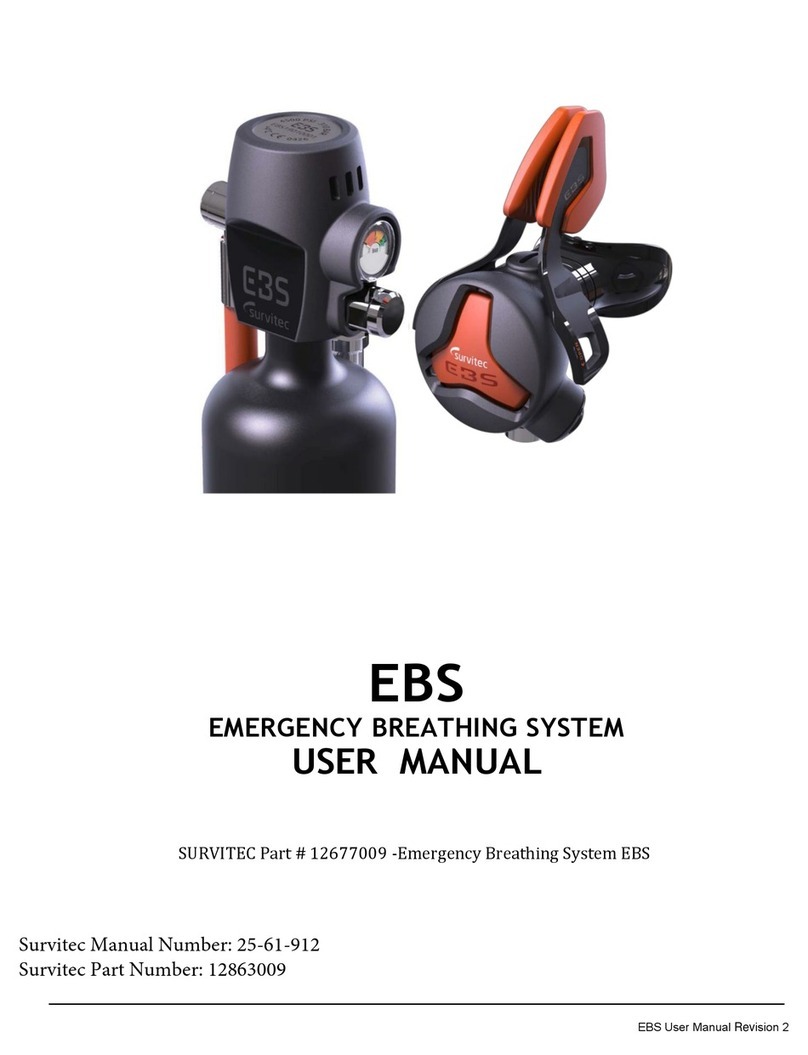
COMPOSITE CYLINDERS CAN BE FAST FILLED AND RE-USED IF THE CYLINDER IS
PROPERLY CARED FOR, WELL MAINTAINED AND UNDAMAGED. HOWEVER, THE
FILLER SHOULD ENSURE THE SETTLED PRESSURE at 15°C DOES NOT EXCEED
THE RATED CHARGING PRESSURE. FAST FILLING UP TO A RATE OF 30 LITERS
PER MINUTE IS ACCEPTABLE ONLY IF THE CYLINDER IS MAINTAINED AND CARED
FOR PER MANUFACTURER’S RECOMMENDED GUIDELINES.
RATE OF FILLING MUST BE MONITORED TO ENSURE CYLINDER IS NOT
OVERFILLED BEYOND RATED WORKING PRESSURE OF 310 BAR. EXCEEDING
MANUFACTURER’S FILL RATE, MAXIMUM WORKING PRESSURE OR
OVERHEATING CAN RESULT IN SERIOUS INJURY OR DEATH.
Cylinder Manufacturer Recommendations:
EBS CREW Cylinders have a design life of 15 years and an inspection period of 5 years, as indicated on
the cylinder.
Cylinders must be subjected to a thorough periodic inspection in accordance with ISO 11623. The period of
inspection for this composite cylinder is 5 years for non-toxic gases or 3 years for toxic gases. Check the
specification packing provision column before filling gases in the composite cylinder with aluminum liner.
The periodic re-qualification requires each cylinder to be examined internally and externally for defects,
and then subjected to a hydrostatic pressure test to the design test pressure. Only on completing these
procedures satisfactorily can the cylinder be returned to service.
The inspector must follow regulatory authority requirements and criteria in the country the periodic
inspection and testing takes place. If the following guidelines are less stringent than the regulatory
requirements, apply the regulatory authority criteria.
Cylinders shall be rejected if they do not meet the volumetric expansion criteria or if any flaw has grown
following repair and testing. Rejected cylinders shall be rendered unable to hold gas under pressure. In the
event of doubt or dispute in connection with re-testing, AMS and, if necessary the approved Inspection
Body shall be consulted.
IMPORTANT!!
Records of all examinations and testing and relevant test certificates must be retained as evidence of the
examinations—for the lifetime of the cylinder. This includes the 5-year inspection period as noted above.
The manufacturer recommends that if there is evidence that a cylinder has been exposed to overheating
but the temperature of the liner is not believed to have reached 350°F (176°C) for any duration of time, the
cylinder must still be subjected to hydrostatic testing or condemned. A cylinder that has been exposed to
temperatures great enough to change the temper of the liner could show an increase in total or permanent
expansion as measured during hydrostatic testing. Cylinders showing unusually high total expansion or
exceeding the regulatory limits for the relationship of permanent expansion to total expansion (i.e. 5%)
should be condemned.
Composite cylinders are very resistant to impact damage, and a significant impact is required to cause
damage sufficient to warrant condemning a cylinder. Acceptance criteria is demonstrated as below.
CONTACT cylinder manufacturer for further inspection and service.
Abrasion and Cut Damage:
Minor abrasion such as scuffs less than 0.005 in. (0.127mm) deep is acceptable.
EBS CREW USERMANUAL
Document #: ZE.01.05.0023 Rev. 2
